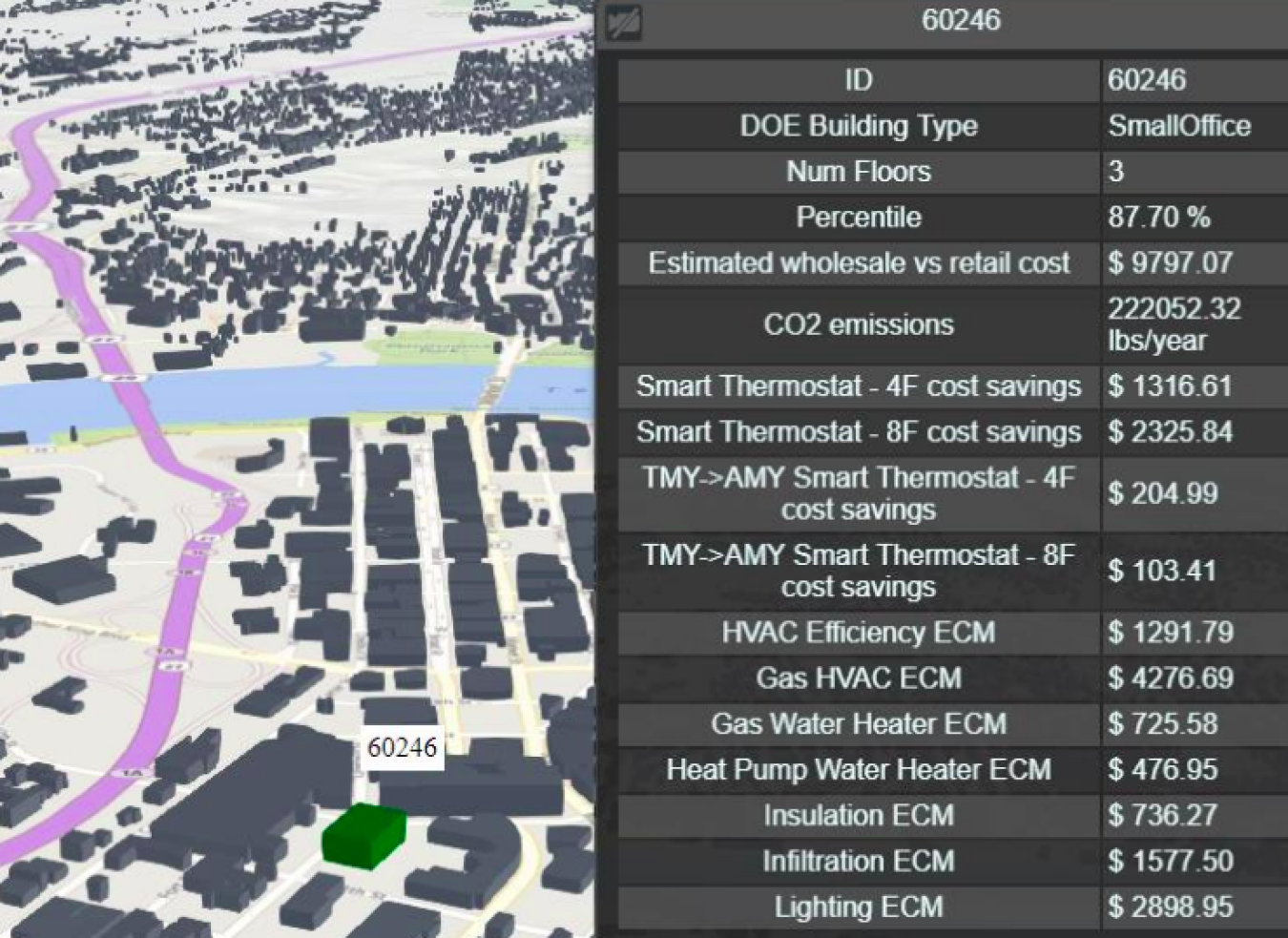
Project website: https://evenstar.ornl.gov/autobem/virtual_epb
Lead Performer: Oak Ridge National Laboratory – Oak Ridge, TN
Performers: Electric Power Board of Chattanooga – Chattanooga, TN
Total DOE Funding: $650,000
FY19 DOE Funding: $400,000
Project Term: October 1, 2017 – September 30, 2019
Funding Type: Lab Award
Related Projects: EnergyPlus, OpenStudio
Project Objective
The Electric Power Board (EPB) of Chattanooga is a publicly owned utility that uniquely supplies both electricity and internet to southeastern Tennessee.
In this project, ORNL will use EPB’s 15-minute electricity consumption data along with GIS data to create a “digital twin”, i.e., a calibrated building energy model, for each of the 178,000 buildings in EPB’s service territory. These models will support analysis for five utility-defined use cases including rate structure design, energy-efficiency program design, demand response program design, design for resiliency, and customer communications.
Project Impact
EPB’s gigabit Ethernet backed electricity grid is effectively leveraged by DOE’s Grid Modernization Laboratory Consortium (GMLC) as a living laboratory and EPB is in the process of creating a secure control center at ORNL for EPB’s business systems. EPB projects provide case studies and models for other utilities and that informs BTO investment decisions.
The project leverage’s DOE investments in High Performance Computing to scalably analyze large data building property data sets, create EnergyPlus models, run in excess of 3 million simulations, and analyze over 13TB of results. A preliminary result indicates demand response (DR) and energy efficiency (EE) measures can save EPB’s customers $11-35 million annually.
Contacts
DOE Technology Manager: Amir Roth and Madeline Salzman
Lead Performer: Joshua New, Oak Ridge National Laboratory

